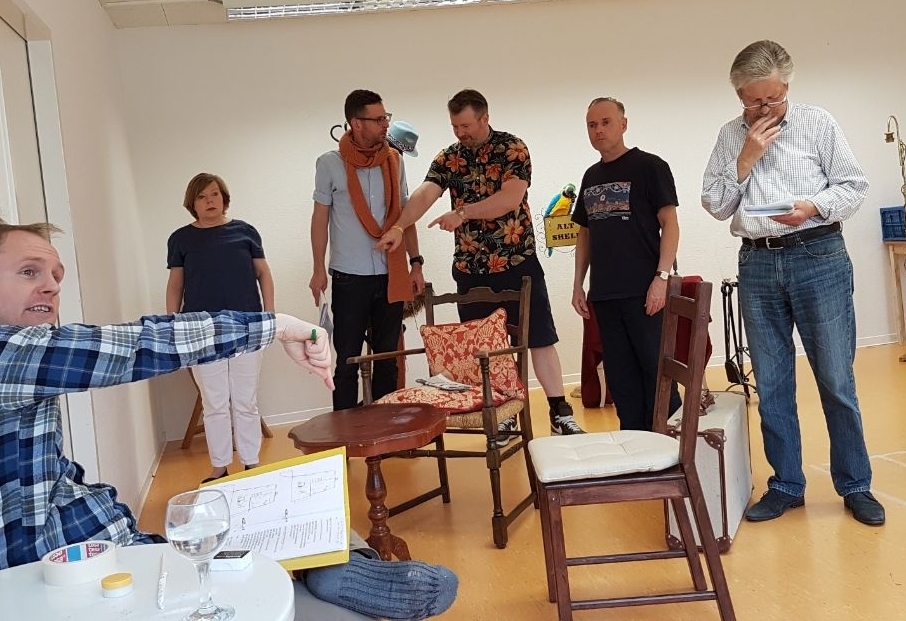Theatre life in times of a global pandemic almost seems impossible. Choosing the one-woman play “Annie Wobbler”, the Hamburg Players have tried to circumvent many of the problems along the way – rehearsals can be done with only one director and the actress in the room. However, for a show to get off the ground, many departmental cogwheels need to work together, and obviously creativity is usually fuelled by watching rehearsals, brainstorming together. Martina Plieger, who together with Kostas Lampou forms the props team for this production, talks about the challenges she encounters along the way:
Kettle, mug, mirror: Martina with some of the props for the upcoming show.
In times of social distancing, what is it like for you working on props?
Martina Plieger: “It's definitely weird and challenging trying to work on a theatre production during a pandemic. Since Corona regulations currently permit only two people at the clubhouse – where we rehearse – at a time, we’ve had to make arrangements as to who comes in when. This time round, I've only ever spent a couple of minutes at a time at the clubhouse, it’s a popping-in-dropping-off-props-popping-out kind of situation. At the very beginning I was able to spend maybe 30 minutes in the props room to check what we had and what needed to be bought. But that was it. It’s very different from the way we usually work“
What are some particular challenges you have encountered – and how did you solve them?
MP: “One of the main challenges is that I cannot just go into a store or theatre fundus to browse for stuff. Almost everything had to be bought online at different vendors. Props are very particular pieces that need to fit a certain era – looking for them always feels like a treasure hunt! You will never find one vendor that has it all. So, I ended up making a lot of mini-purchases online, buying a bar of soap here, shoe polish there, a mug there. A really lucky find was the typewriter which I stumbled upon when I helped clear out my old neighbors’ apartment.
“Then there was what I call ‘the rollmops challenge’. Annie, the first of the three characters, has to eat a pickled herring from a jar. Unfortunately, Joanna, the actress, can’t have them, so I bought a couple of rollmops made of marzipan. My first idea was to fill an entire jar with marzipan rollmops but I was concerned that the food color might come off when put in a liquid. Not wanting to take that risk, I bought a jar with a smaller cup inside that is also sort of attached to the lid. The idea is to put one marzipan rollmops in the smaller cup so that it can't be contaminated by the real rollmops in the jar. We have yet to test whether it will work or not!”
The real deal - or made of marzipan?
The props team for this play consists of you and Kostas Lampou. How did the two of you manage to work together?
MP: “Under the current regulations, division of labor is the way to go; I mean, even the directors have to take turns. For props work, Kostas and I split the play into two parts. I am responsible for the first part, Kostas for the second. We each wrote the props list for our respective parts and then worked separately. So far, I've only seen Kostas during our production meetings via Zoom. We sometimes chat via WhatsApp but that's it.
Props for scene 2.
“I have to say I've never felt this lonely during a production. The team spirit, the togetherness, is what I value most in theatre. This time there was none of that: no watching the rehearsals, no hanging out and having a chat during rehearsal breaks, no going to the Greek after rehearsals. At the moment, I feel more like an independent contractor who pops in and out, which can be really frustrating at times. But if there is an upside to the pandemic it is that it lets us appreciate all those things we now miss even more. And I for one can't wait to experience our first ‘normal’ production post-Corona.”




















